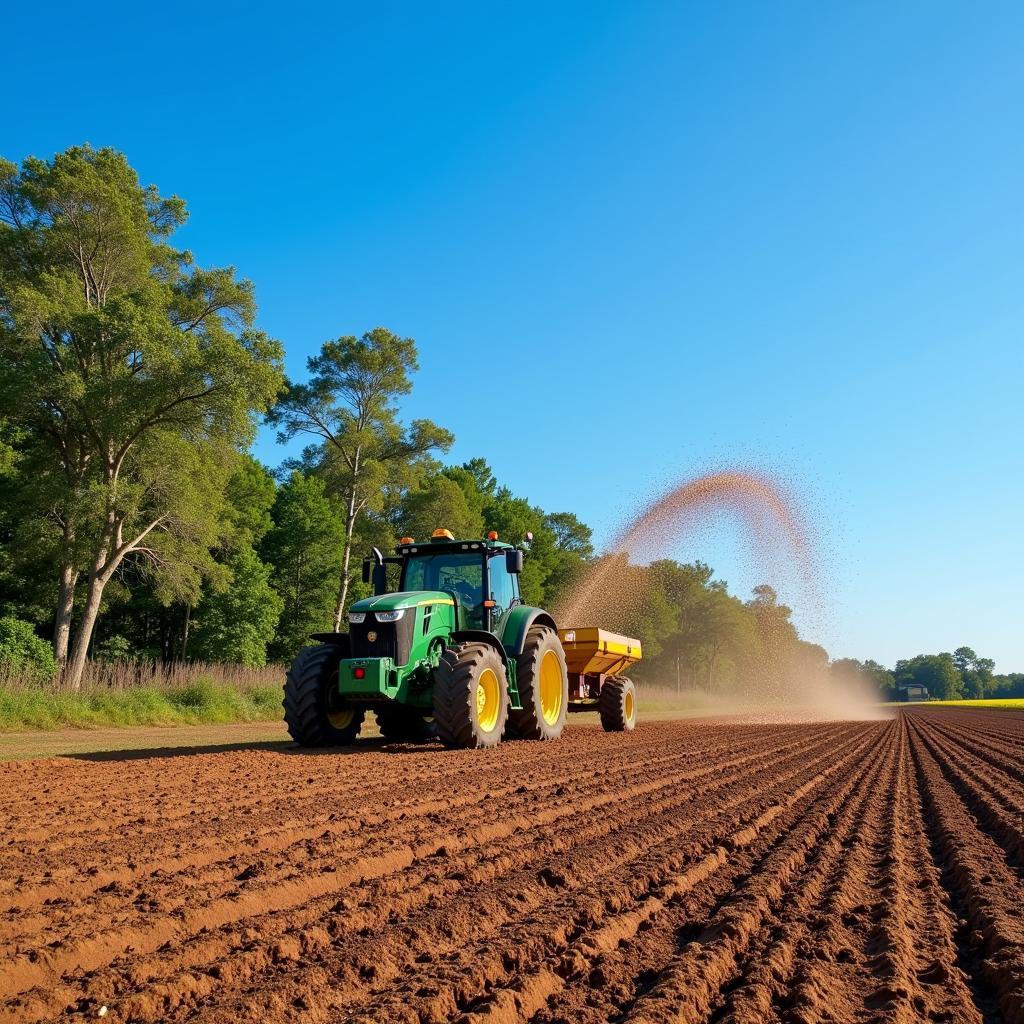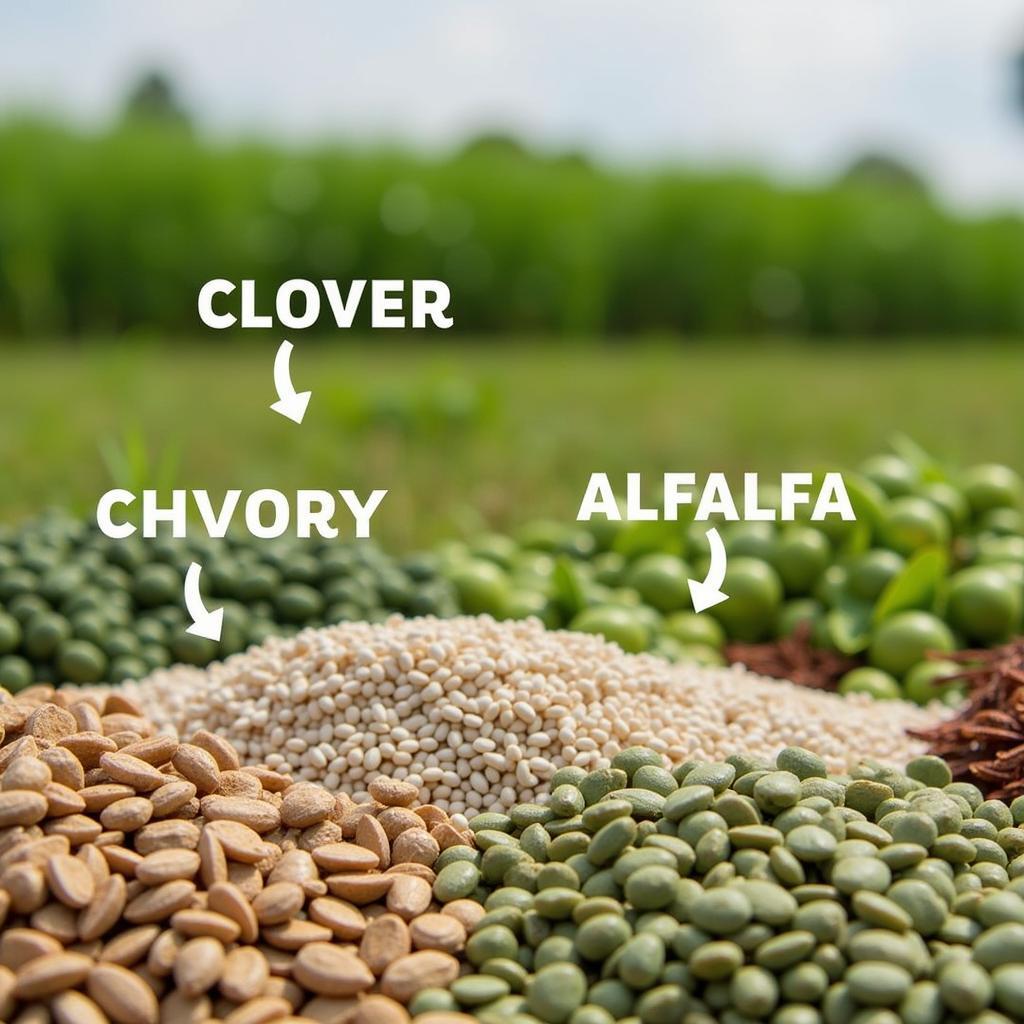Spring is a time of renewal and growth, and for wildlife enthusiasts, it’s also the perfect time to establish a thriving food plot. A well-planned Spring Food Plot Mix can provide essential nutrition for deer, turkey, and other wildlife throughout the summer and fall. Choosing the right mix is key to success, so let’s dive into the world of spring food plot mixes and discover how to create the perfect buffet for your local wildlife.
Deer benefit significantly from a high-quality food plot. A strategically planted food plot clover can help support a healthy deer population by providing readily available forage. Soon, you’ll have a thriving plot attracting wildlife from near and far.
Choosing the Right Spring Food Plot Mix
Selecting the right spring food plot mix depends on several factors, including your local climate, soil type, and the target wildlife species. Do you want to attract deer, turkey, or a variety of species? Are you looking for a quick-growing annual mix or a more permanent perennial plot? These are important considerations that will influence your choice.
Matching Your Mix to Your Region
Different regions have different growing seasons and soil conditions. A mix that thrives in the warm, humid South may not perform as well in the cooler North. Researching recommended mixes for your specific area is crucial for success. Consider factors like rainfall, temperature, and the length of your growing season.
Understanding Your Soil
Soil testing is essential for determining the pH and nutrient levels of your soil. This information will help you choose a mix that is well-suited to your soil conditions and identify any necessary amendments. A soil test can save you time and money in the long run by ensuring that your chosen mix has the best chance of success. Knowing your soil’s needs allows you to create the most productive food plot possible.
 Spring Food Plot Mix Soil Testing
Spring Food Plot Mix Soil Testing
Consider a Clover Food Plot for a Long-Term Solution
If you’re looking for a longer-term solution, consider planting a clover food plot. Clover is a perennial legume that provides excellent nutrition for deer and other wildlife. Once established, a clover food plot can last for several years with proper management. This can be a cost-effective and time-saving option for providing consistent forage.
Planting and Maintaining Your Spring Food Plot Mix
Once you’ve chosen the perfect mix, it’s time to plant! Proper site preparation is essential for ensuring good seed-to-soil contact. This typically involves clearing the area, tilling or disking the soil, and applying any necessary fertilizer or lime. Follow the instructions on your chosen mix for specific planting depth and spacing recommendations.
Watering and Weed Control
Watering your newly planted plot is crucial, especially during dry periods. Weed control is also important to prevent competition with your desired plants. Hand-pulling weeds or using a selective herbicide can help keep your plot weed-free. A throw and go food plot can be a great option if you are looking for an easier establishment method, requiring less site preparation.
Fertilizing and Maintaining Your Plot
Depending on your soil test results, you may need to apply fertilizer to your plot to ensure optimal growth. Regular mowing can also help stimulate growth and prevent weeds from taking over. Monitor your plot regularly and make adjustments as needed. A thriving food plot requires ongoing care and attention.
 Planting a Spring Food Plot Mix
Planting a Spring Food Plot Mix
Remember that food plots for turkey require different considerations, so tailor your mix accordingly if turkeys are your target species. For instance, incorporating chicory food plot seed into your mix can be beneficial as turkeys are drawn to its leaves and roots.
Common Spring Food Plot Mix Ingredients
Several popular ingredients are commonly found in spring food plot mixes, each offering unique benefits to wildlife:
- Clover: Provides high-protein forage for deer and other wildlife.
- Chicory: Offers a palatable and nutritious food source, particularly for deer and turkey.
- Alfalfa: Another high-protein legume that is favored by deer.
- Brassicas: Such as turnips and radishes, provide excellent late-season forage.
- Grains: Like oats and wheat, offer quick-growing forage for early-season browsing.
 Common Spring Food Plot Mix Ingredients
Common Spring Food Plot Mix Ingredients
Conclusion
Creating a successful spring food plot requires planning, preparation, and ongoing maintenance. By choosing the right mix for your region, soil type, and target wildlife, you can provide a valuable food source that benefits wildlife throughout the year. A well-maintained spring food plot mix enhances the natural habitat and offers a rewarding experience for wildlife enthusiasts. So, get started planning your spring food plot today!
FAQ
- When is the best time to plant a spring food plot mix? Generally, spring is the ideal time, after the last frost.
- How much fertilizer should I use? Follow the recommendations based on your soil test results.
- How often should I mow my food plot? Mowing can be beneficial depending on the mix, but follow specific recommendations for your chosen plants.
- What are some common mistakes to avoid? Not testing your soil, planting too early or late, and neglecting weed control.
- What are the benefits of a perennial food plot? Perennial plots require less work in subsequent years, providing consistent forage.
- How do I choose the right mix for my region? Research local recommendations and consider factors like climate and soil type.
- What if my food plot doesn’t grow well? Re-evaluate your soil test, planting methods, and weed control practices.
Scenarios
Scenario 1: Deer are not attracted to your food plot. Consider the surrounding environment, other food sources available, and whether the chosen mix is appealing to deer in your area.
Scenario 2: Weeds are overtaking your food plot. Implement a weed control strategy, either by hand-pulling or using a selective herbicide.
Scenario 3: Your food plot is not growing well despite proper planting. Retest your soil and consider adding fertilizer or other soil amendments.
Other Resources:
For more information on specific food plot mixes, check out our articles on food plot clover and chicory food plot seed. You can also find helpful tips on creating a throw and go food plot for a quick and easy option. If you are interested in attracting turkeys, check out food plots for turkey. For general advice on clover food plots, you can refer to our article on clover food plot.
Need help? Contact us!
For assistance with your spring food plot mix, please contact us at Phone Number: 02437655121, Email: [email protected] Or visit our address: 3PGH+8R9, ĐT70A, thôn Trung, Bắc Từ Liêm, Hà Nội, Việt Nam. We have a 24/7 customer service team.